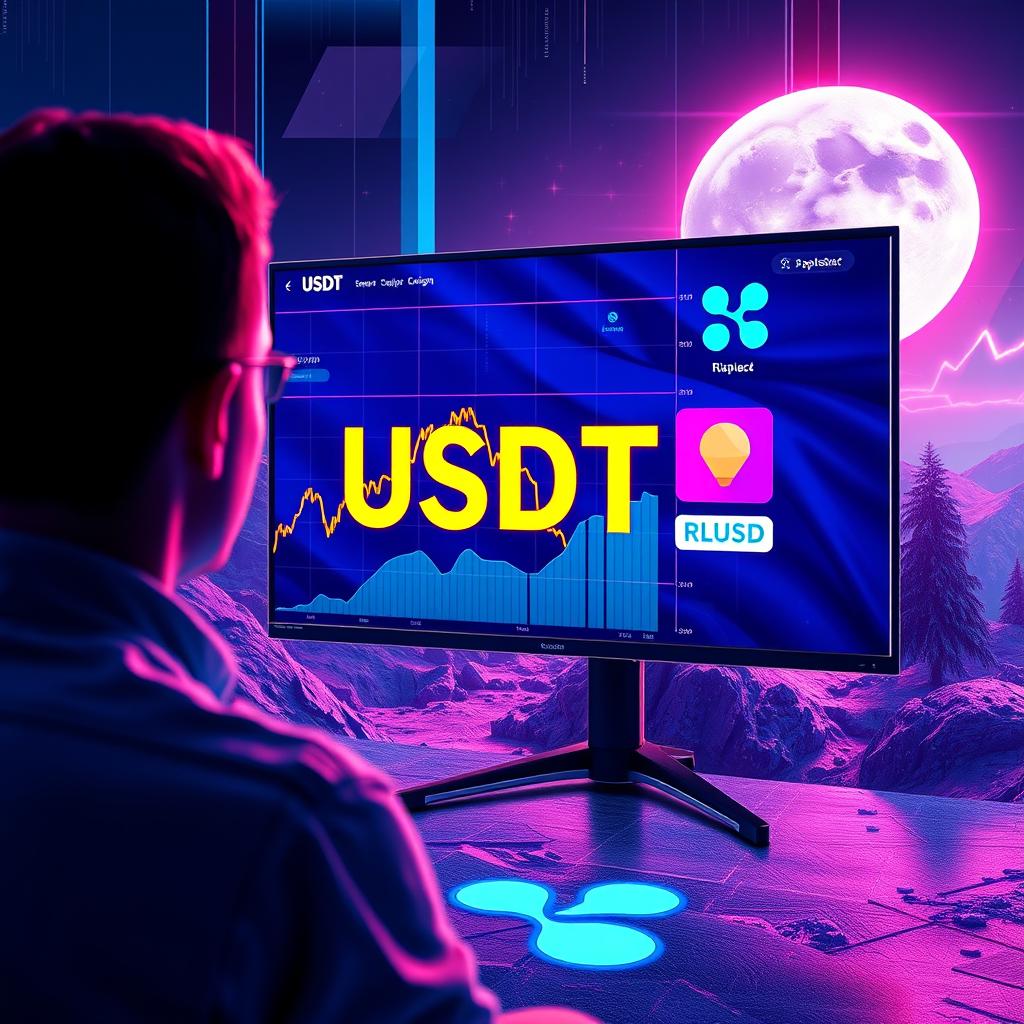Analysis of the Stablecoin Market: Is USDT Losing Ground?
The stablecoin market, currently valued at $206.2 billion, is undergoing a significant shift. Tether’s USDT, which has long dominated the market with a 66% share, is facing challenges from increasing regulatory scrutiny, particularly in the European Union, and growing competition from alternatives like Circle’s USDC and Ripple’s RLUSD. The implementation of the European Union’s Markets in Crypto-Assets (MiCA) regulations on December 30, 2024, has been a turning point, imposing stringent compliance requirements on stablecoin issuers.
USDT Under Scrutiny
USDT’s dominance is starting to waver due to mounting regulatory pressure and competition. The MiCA regulations require major stablecoin issuers like Tether to hold 60% of their reserves in EU banks, a mandate that Tether’s CEO, Paolo Ardoino, has expressed concerns about, citing the risks of “bank failures.” Despite these concerns, the market seems more focused on Tether’s actions, or lack thereof, with nearly $4 billion worth of USDT redeemed in the days leading up to MiCA’s implementation. This outflow, the largest since the 2022 crypto winter, marks a significant decline in USDT’s market cap, which stands at $137.5 billion as of January 9, 2025, down from $141 billion just two weeks earlier.
Competitors Closing In: USDC and RLUSD’s Strategic Advances
Tether’s competitors, particularly USDC and RLUSD, are thriving under the new regulatory framework. USDC, having secured MiCA approval in mid-2024, has positioned itself as the stablecoin of choice for exchanges looking to align with EU rules. Binance’s partnership with Circle to drive global USDC adoption is a direct response to growing demand for transparency and compliance, with USDC’s market cap growing by $2 billion since securing the license. Ripple’s RLUSD, launched on December 17, 2024, is also gaining traction as a regulatory-compliant alternative, with 33,953 transactions processed on the XRP Ledger and 1,690 on Ethereum during its testing phase.
Ripple’s Big Moment: RLUSD Gains Momentum
The year 2025 could be a turning point for Ripple, with a convergence of legal victories, strategic partnerships, and a crypto-friendly administration in the U.S. creating ideal conditions for expanding its foothold in the stablecoin market. Ripple’s president, Monica Long, has hinted at ambitious plans for RLUSD, including imminent listings on major exchanges to broaden its reach and utility. The company’s well-established payments business, with transaction volumes doubling over the past year, is a crucial driver for RLUSD’s adoption. Partnerships, such as the one with Chainlink, could propel RLUSD into the decentralized finance space, offering new opportunities for both traditional and DeFi users.
Predictions: The Future of the Stablecoin Market
Given the current trends and regulatory shifts, several predictions can be made about the future of the stablecoin market:
- Power Transition in the Stablecoin Market: As MiCA sets a clear regulatory benchmark in the EU, the U.S. is likely to follow suit, pushing toward an accountable regulatory framework. This could mark the beginning of a power transition in the stablecoin market, with USDT’s competitors gaining momentum.
- Rise of USDC and RLUSD: USDC and RLUSD are well-positioned to benefit from the regulatory shifts, with USDC’s compliance-first approach and RLUSD’s seamless integration into DeFi markets making them attractive alternatives to USDT.
- Increased Regulatory Compliance: The implementation of MiCA and potential U.S. regulations will likely lead to increased regulatory compliance across the stablecoin market, with issuers prioritizing transparency and audits to maintain market trust.
- Growth of the Stablecoin Market: Despite the challenges faced by USDT, the stablecoin market is expected to continue growing, driven by increasing demand for stable and compliant digital assets.
In conclusion, the stablecoin market is undergoing a significant shift, with USDT facing challenges from regulatory pressure and growing competition. As the market continues to evolve, it is essential to monitor the developments and adjustments made by stablecoin issuers, exchanges, and regulatory bodies to navigate the changing landscape effectively.




